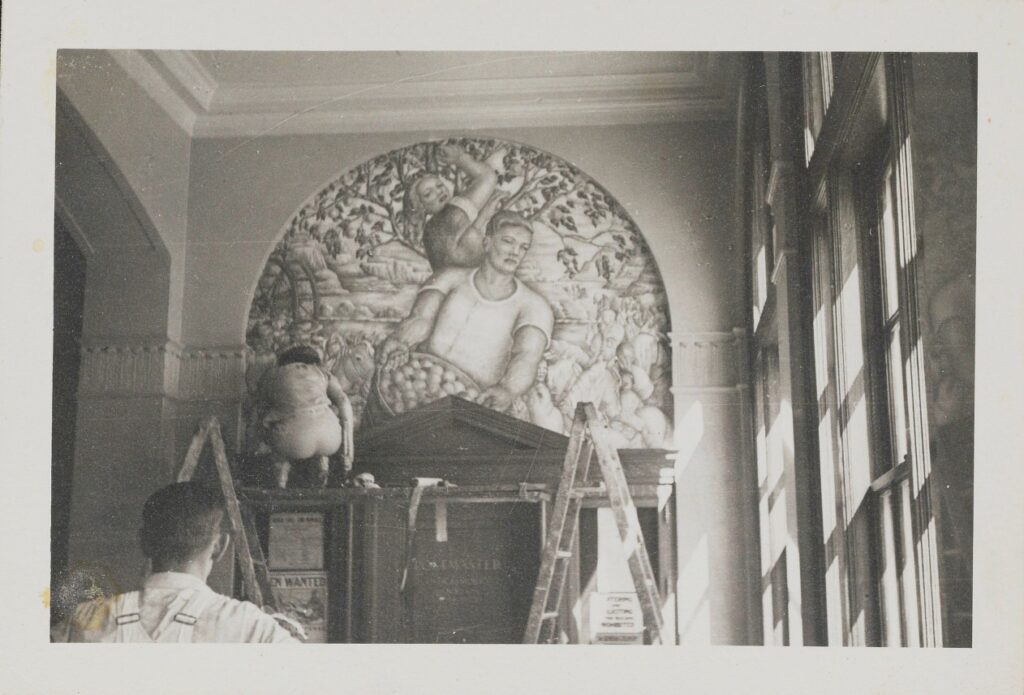
The New Deal turned 90 in 2023. In honor of that milestone, we thought we would share a bit more information about Louise Emerson Ronnebeck’s New Deal commissions. In a 1946 Denver Post article, Louise was described as a “four handed woman – – managing home and children on one side, and teaching and painting on the other”. In addition to her privately commissioned frescoes and easel paintings, during an eight-year span, she entered 16 mural commission competitions for the Treasury Department Section of Painting and Sculpture. These projects included the Department of Justice Building, Washington, DC (1936, 1941); Fort Scott, Kansas Post Office (1937); Phoenix, Arizona Post Office(1937); Worland, Wyoming Post Office (1938); El Paso Texas Courthouse (1938); Dallas, Texas Post Office (1940), Grand Junction Post Office and Courthouse and Littleton, Colorado Post Office (1940); St. Louis Post Office (1939, 1942); Social Security Building, Washington, D.C, (1940 and 1942); Amarillo, Texas Post Office (1941); South Denver Post Office (1942); and lastly, Los Angeles Terminal Annex Post Office (1944).
She won commissions for two post office murals, both funded by the Treasury Department Section of Painting and Sculpture, later the Section of Fine Arts (“the Section”). The first, in 1938, The Fertile Land Remembers, oil on canvas, for the Worland, Wyoming Post Office. The second, in 1940, Harvest, oil on canvas, for the Grand Junction Post Office, in Colorado.
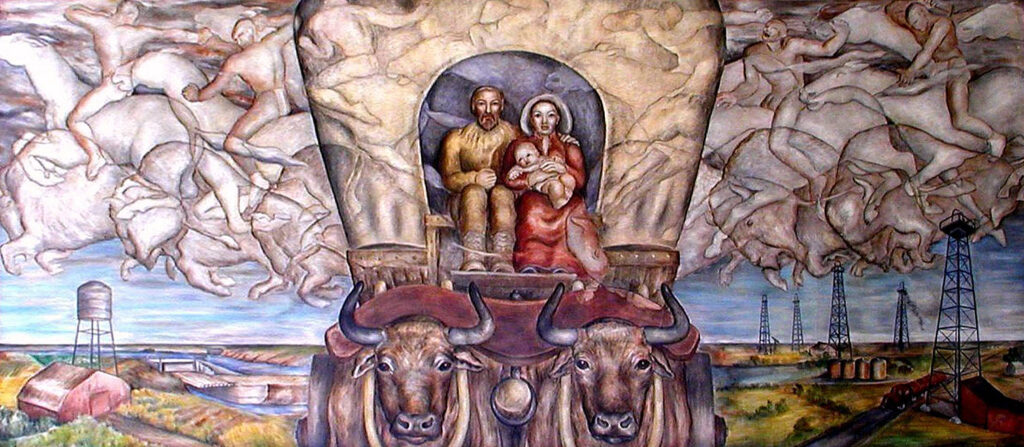
Louise’s first Section commission was for the Worland Wyoming Post Office. The post office building itself was also a product of the New Deal, constructed in 1935. The Section had difficulty finding a Wyoming artist for the Worland Post Office mural. Louise received the commission based on her 1938 El Paso, Texas Courthouse proposal. Entitled The Winning of Texas, featuring scenes from Texas life, including the cattle and oil industries. She enjoyed depicting battle scenes and would have preferred to work with that theme, but Edward Rowan, head of the Section for Fine Arts, thought that the theme had been over-used.
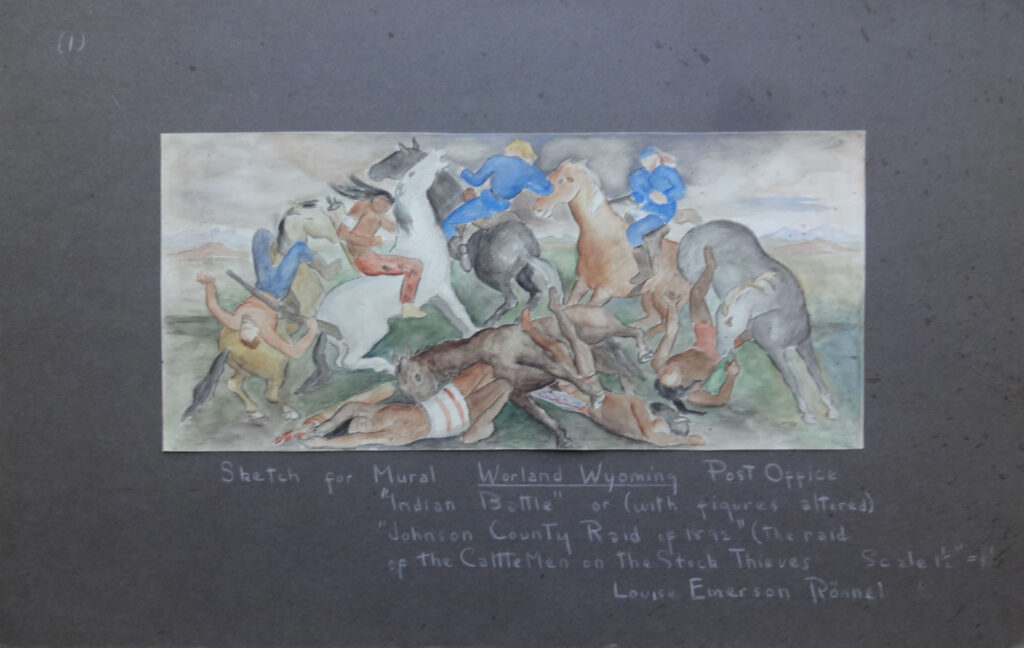
Louise had never visited Wyoming, so she consulted with the Worland Postmaster to discuss suitable themes. There was much apprehension over the choice of a Colorado artist to execute the mural. Wyoming and Colorado, along with South Dakota were both part of Region 11. Rowan wrote in a memo to the Director of Procurement dated November 8, 1938, “The artists of Wyoming had an equal chance with those in Colorado to compete in the regional competition. The artists of Wyoming according to all records are very poor”. We’ve seen images of some Wyoming artists’ works of the period, and we don’t think that is true. Perhaps Louise’s proposal was simply a better fit for this particular commission.
The plaque accompanying the mural quotes a letter Louise wrote in 1938, explaining the piece.
“The work is a romantic recollection of the covered wagon and the wild Indian and bison of the old West, who still in retrospect hover over the irrigated fields and oil wells of the present. The covered wagon drawn by oxen is shown inexorably pressing through the galloping figures under the white mans’ determination to open new lands. The landscapes on either side depict the present which was created by these pioneers. The way in which the idea is presented was suggested by the device of the double exposure used in many motion pictures to show the past and the present merging into one dramatic unit”.
We have yet to find the specific letter, but assume that this text was in correspondence to Edward Rowan. They corresponded frequently regarding the composition and details of Louise’s work on the Worland mural (and later, her Grand Junction commission). The letter is not in any of Louise’s correspondence at the Archives of American Art. The National Archives Records Administration (“NARA”) holds the written records and correspondence of the Fine Arts Section, as well as the other related agencies. We assume it is in those files. These records have not been digitized. What a treat for researchers if they are digitized one day.
The contract for the work was signed in February 1938 and by June of that year the mural was completed, installed, and she was paid in full, $570. It was 10’ x 5’ and oil on canvas. Family lore is that when Louise completed the mural in June 1938, she rolled it up and strapped it to the hood of their car and the whole family, Louise, her husband, Arnold, their son Arnold, 11 and daughter Ursula, 8, maybe even the dog, Blackie, all made the trip driving from Denver to Worland for installation. Our assumption is that is true, because she generally installed her works herself, usually with the help of assistants. We don’t know if she brought assistants with her on this trip. Perhaps her husband and children were pressed into duty.
The Worland Post Office is now the town’s City Hall. At some unknown date The Fertile Land Remembers was moved to the Casper Wyoming Post Office located in the Dick Cheney Federal Building, built in 1970.
To visit Louise Emerson Ronnebeck’s The Fertile Land Remembers, go to:
Dick Cheney Federal Building
100 East B Street
Casper, Wyoming 82601

Louise was selected for the Grand Junction Post Office and Courthouse project based on her submission for the national competition for the St. Louis post office. Constructed in 1918, the Grand Junction Federal Courthouse was designed in the Italian Renaissance style by James Wetmore, an architect for the U.S. Treasury. In March 1940 Louise submitted three proposals – – Birdy in a Cage and Three Hands Round, using a square-dancing theme; Battle of Milk Creek of 1879; and, finally, The Harvest.
The agriculture theme of the harvest was chosen. The resulting work was lunette shaped, oil on canvas and 5’ x 7’9”. The mural was completed in October 1940 and she received the final payment for a total of $800. The mural portrays a young man and woman working together harvesting peaches provided by the rich Colorado soil. A water paddle wheel in the background represents modern irrigation which made the abundant harvest possible. In the background on the right the Ute Indians are pushed out of the valley by the white settlers in 1881.
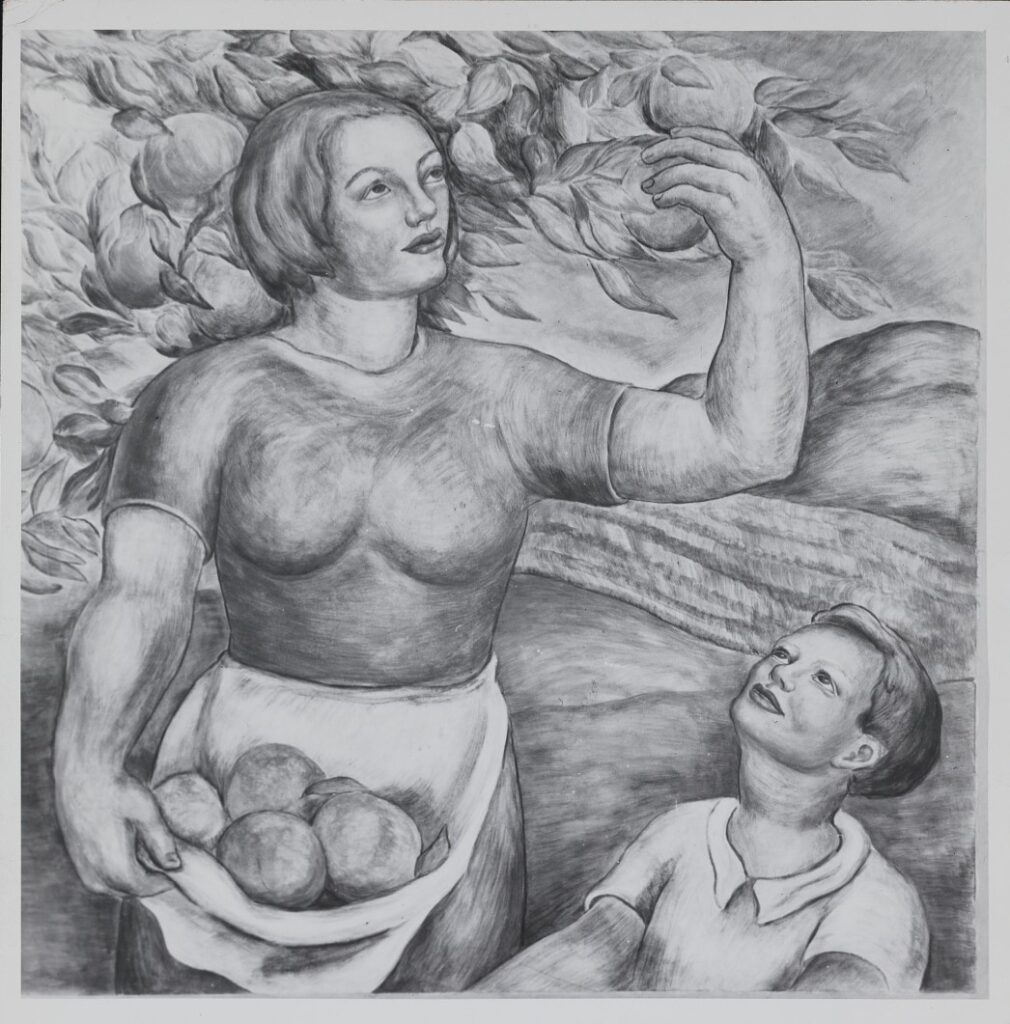
Louise painted the canvas in her attic studio in Denver. We have read that she used her children as models for the work. This makes sense because the two figures in the work do resemble her children, however, it seems slightly odd because her children were only 11 and 13 at the time and the figures in the final work are clearly adults. Perhaps a coincidence, but her children would resemble these figures several years after the painting was created. However, in one unrealized Harvest sketch, Louise’s young son is depicted, so he did pose for her, he just didn’t make the final version. Poor kid ended up on whatever the painting equivalent is to the cutting room floor.
By 1973, the mural was dirty and dull. It was shipped to Washington DC and New York City for restoration and, unfortunately, subsequently forgotten. Until 1991, its whereabouts were unknown. The building manager of the Aspinall Federal Building in Grand Junction had come across frequent references to the mural but could not locate it. Through perseverance and dogged detective work, he finally located it in New York, had it restored in Colorado, and returned it to Grand Junction.
In January 1992, Louise’s son and daughter, who had originally posed for the work over 50 years earlier (in some iteration), unveiled it in a ceremony in the Grand Junction Aspinall Federal Building, where it remains today. So many of Louise’s public commissions were true frescoes and are lost to history when the buildings they were in were demolished. The Aspinall building was listed on the National Register of Historic Places in 1980, so it is now protected. We are thrilled that The Harvest was found and is back where it belongs. This is a lucky happy ending. Unfortunately, there are thousands of artworks from the New Deal art projects that remain currently lost.
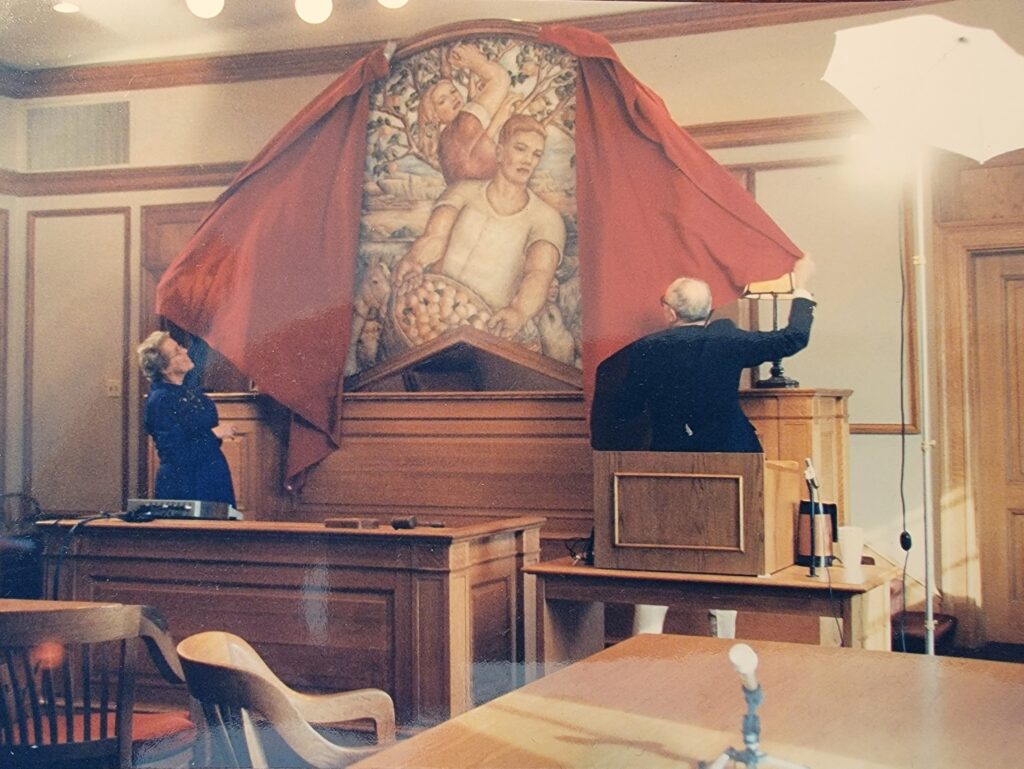
To visit Louise Emerson Ronnebeck’s The Harvest, go to:
Wayne Aspinall Federal Building and US Courthouse
400 Rood Avenue
Grand Junction, Colorado 81501